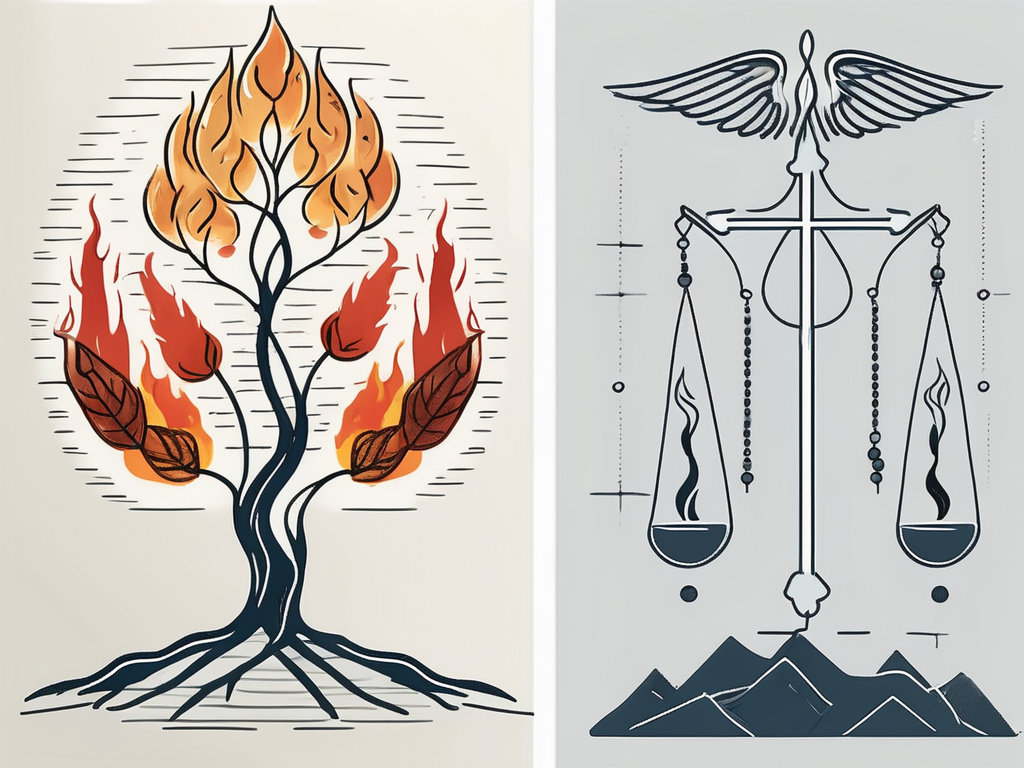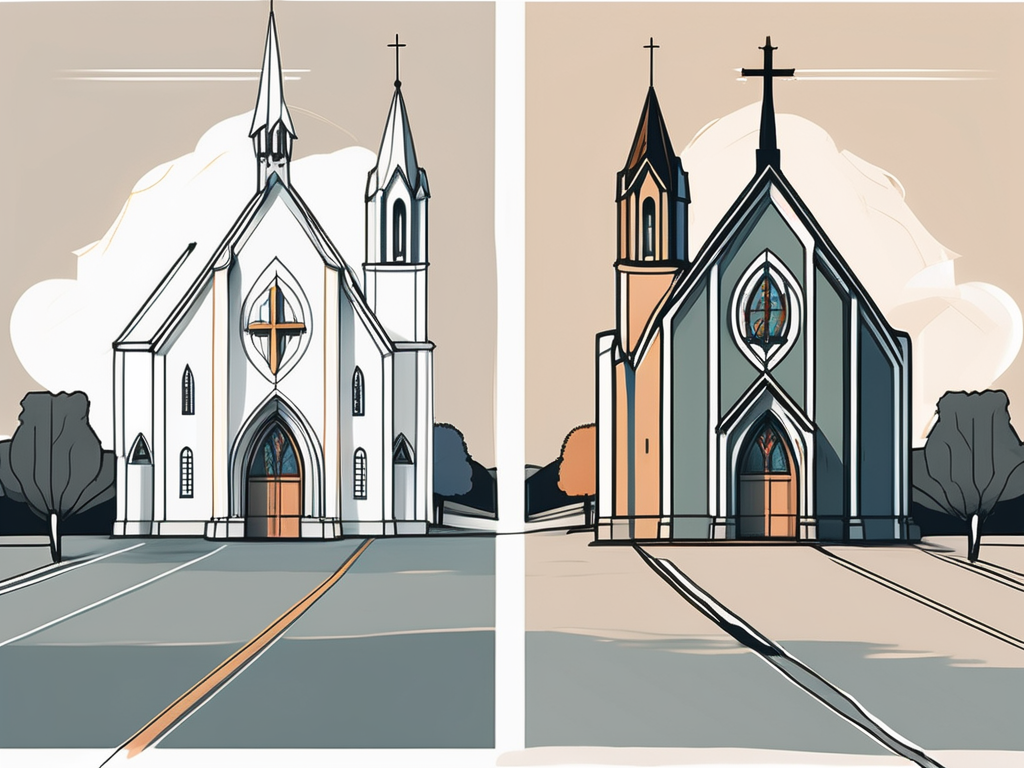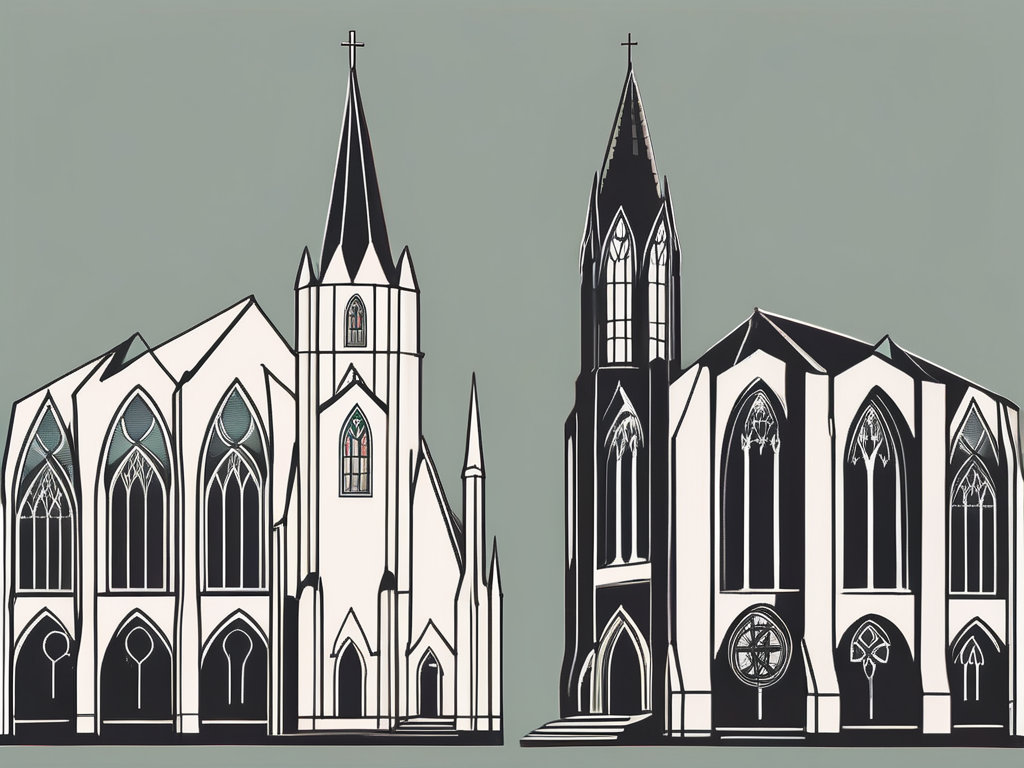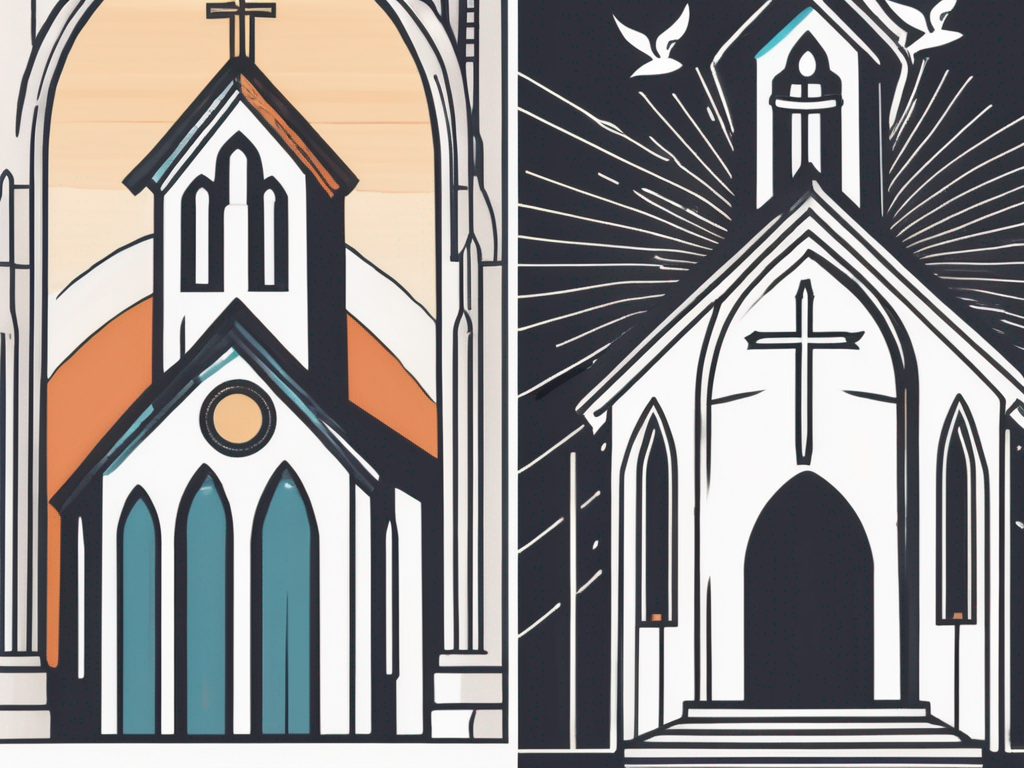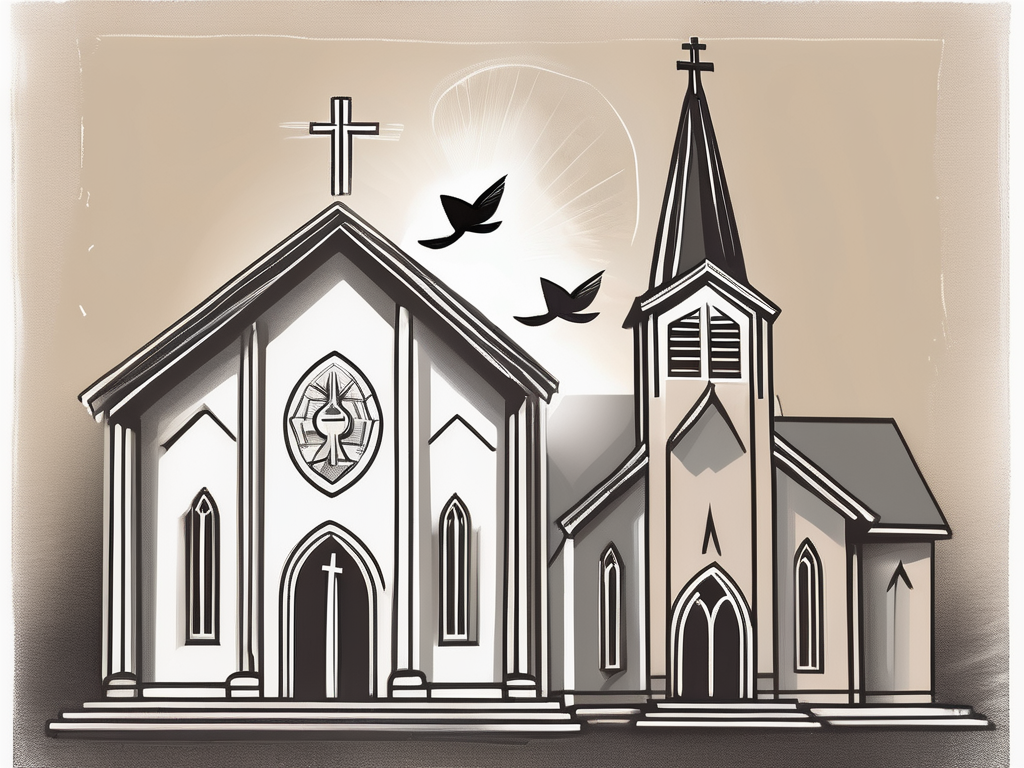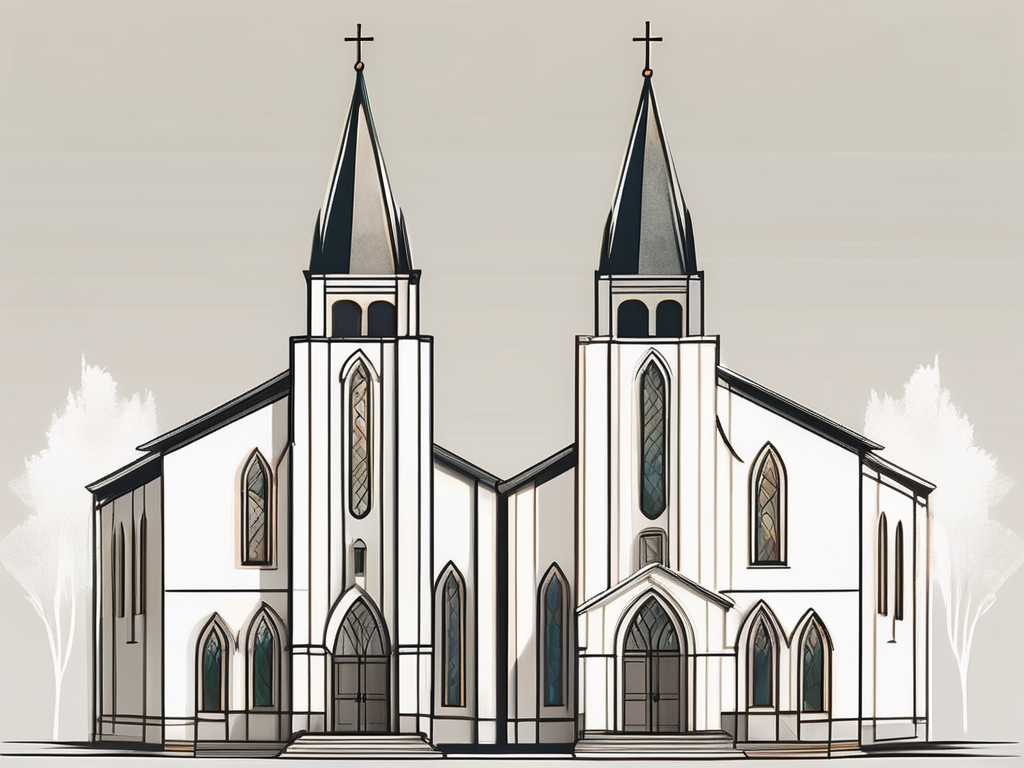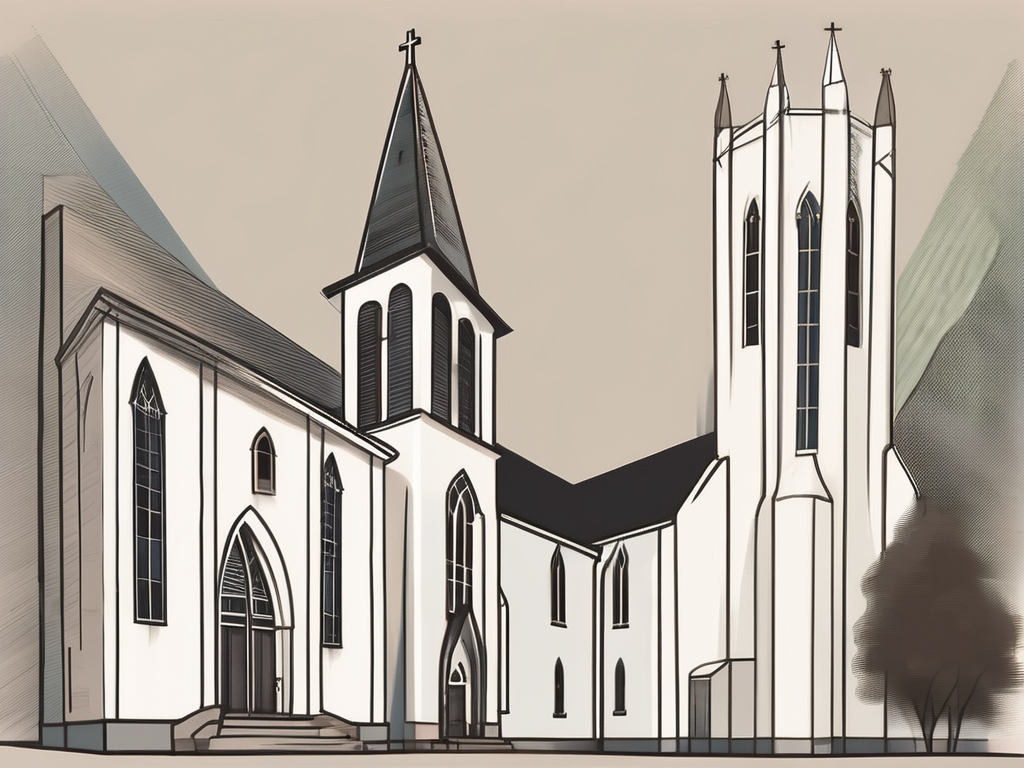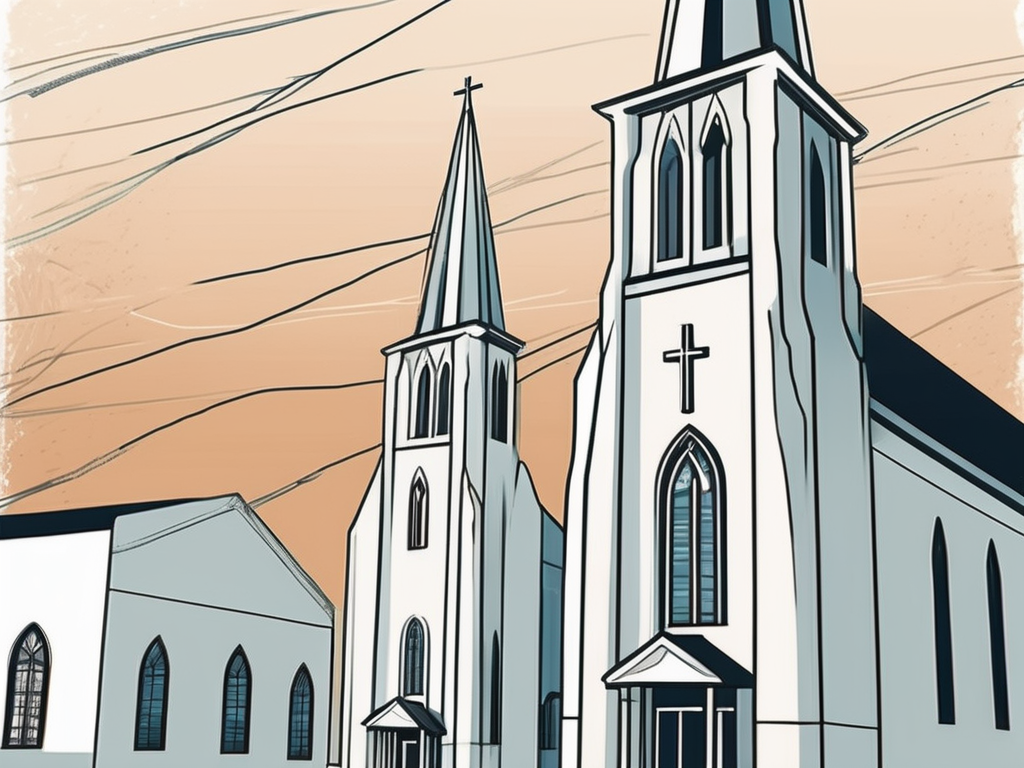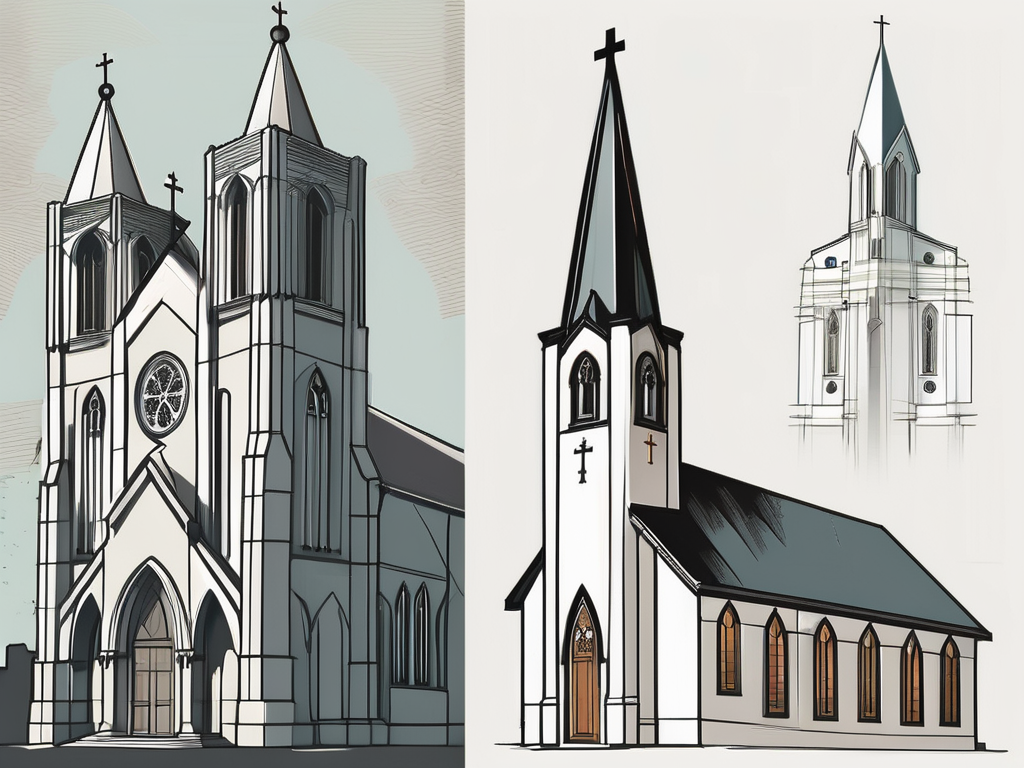In the realm of Christianity, there are numerous denominations and religious traditions that one can explore. Two prominent branches, Catholicism and Presbyterianism, have caught the attention and devotion of millions of believers worldwide. This article aims to provide a comparative analysis of these religious traditions, shedding light on their various aspects and exploring their similarities and differences.
Understanding the Basics: Catholicism and Presbyterianism
Before delving into the rich tapestry of Catholic and Presbyterian traditions, it is crucial to understand their origins, historical background, and key beliefs and doctrines. By exploring the roots of these traditions, we can gain profound insights into their practices and beliefs.
Origins and Historical Background
Catholicism, one of the oldest Christian traditions, traces its roots back to the time of Jesus Christ and his disciples. It emerged as a prominent religious institution with the establishment of the Holy See in Rome and the papacy as the central authority of the Catholic Church.
Throughout history, Catholicism has played a significant role in shaping Western civilization. From the early days of Christianity, Catholicism spread across Europe, influencing art, architecture, and politics. The Catholic Church became a powerful force, with the pope holding immense spiritual and political authority.
Presbyterianism, on the other hand, takes its name from the Greek word “presbuteros,” meaning “elder.” Its foundations lie in the Reformation movement of the sixteenth century, spearheaded by religious reformer John Calvin. Calvin’s teachings emphasized the sovereignty of God and the authority of scripture.
Presbyterians believe in the importance of a representative system of church government, where elected elders play a significant role in decision-making. This democratic structure sets Presbyterianism apart from other Christian traditions, as it values the participation and input of the entire congregation.
Key Beliefs and Doctrines
Both Catholicism and Presbyterianism share a common belief in the Holy Trinity, the divinity of Jesus Christ, and salvation through faith. However, they differ in various aspects of their doctrines and practices.
In Catholicism, the doctrine of transubstantiation holds that during the Eucharist, the bread and wine become the actual body and blood of Christ. This belief in the real presence of Christ in the Eucharist is central to Catholic worship and devotion. Catholics also venerate saints, seeking their intercession and viewing them as role models of faith.
Presbyterians, on the other hand, understand the Eucharist as a symbolic representation of Christ’s sacrifice. They believe that through the sacrament, believers remember and proclaim the saving work of Christ. Unlike Catholicism, Presbyterian worship does not involve the veneration of saints. Instead, they place a stronger emphasis on individual interpretation of scripture and the priesthood of all believers.
Another significant difference between Catholicism and Presbyterianism lies in the structure of their worship services. Catholic Masses are characterized by liturgical rituals, including the recitation of prayers, readings from scripture, and the celebration of the Eucharist. Presbyterian worship, on the other hand, tends to be more simplified, focusing on preaching and the communal reading of scripture.
While both traditions have their distinct practices and beliefs, they both strive to deepen their relationship with God and live out their faith in the world. Understanding the origins and key aspects of Catholicism and Presbyterianism helps us appreciate the diversity and richness of the Christian faith.
The Structure and Governance of the Church
The structure and governance of the church play a vital role in shaping the religious experiences of Catholic and Presbyterian believers. Let us explore the hierarchical structure of Catholicism and the democratic polity of Presbyterianism.
When we delve into the structure and governance of the church, we discover fascinating details that shed light on the inner workings of these religious institutions. Understanding the hierarchy and decision-making processes can provide a deeper appreciation for the traditions and practices that shape the lives of believers.
The Catholic Hierarchical Structure
Catholicism is characterized by a top-down hierarchical structure, with the Pope serving as the head of the Church and exercising supreme authority. The Pope, also known as the Bishop of Rome, is considered the successor of Saint Peter, who was appointed by Jesus Christ to lead the early Christian community.
Below the Pope, there are bishops, priests, and deacons who carry out religious duties and administer sacraments to the faithful. Bishops are responsible for overseeing multiple parishes within a specific geographic area, known as a diocese. They provide guidance, support, and pastoral care to both priests and the Catholic community.
Priests, ordained by bishops, serve as spiritual leaders within individual parishes. They celebrate Mass, administer the sacraments, and offer guidance and support to their parishioners. Deacons, on the other hand, assist priests in their pastoral duties and often play a significant role in charitable works and community outreach.
This centralized structure ensures uniformity in doctrine and practice throughout the Catholic Church, providing believers with a sense of unity and connection to centuries of tradition. It also allows for the dissemination of teachings and guidance from the Pope to the entire Catholic community, fostering a cohesive faith experience.
The Presbyterian Polity
Presbyterianism, in contrast, follows a more democratic polity, with decision-making power residing in elected bodies of elders. This unique system of governance reflects the belief in the priesthood of all believers, emphasizing the active participation of the laity in the life of the church.
Congregations are governed by elected representatives called presbyters, who collectively form a regional governing body known as the presbytery. These presbyters are elected by the congregation and serve as the voice of the people in matters of church governance and decision-making.
This participatory model of governance enables greater local autonomy and input from the laity, fostering a sense of active involvement and community within Presbyterian churches. It allows for a diversity of perspectives and encourages open dialogue and debate on matters of faith and practice.
Presbyterianism also emphasizes the importance of accountability and oversight. Higher governing bodies, such as synods and general assemblies, provide guidance and support to individual congregations and ensure adherence to the principles and teachings of the denomination.
By embracing this democratic polity, Presbyterian churches strive to create an inclusive and collaborative environment where the voices of all members are valued and respected. This commitment to shared decision-making reflects the belief in the priesthood of all believers and encourages active engagement in the life and mission of the church.
Worship and Sacraments: A Comparative View
The worship practices and sacraments in Catholicism and Presbyterianism offer distinctive experiences that shape the spiritual lives of their adherents. Let us delve into the Catholic Mass and the Presbyterian worship service to understand their significance.
The Catholic Mass
The centerpiece of Catholic worship is the Mass, a solemn liturgical ceremony that commemorates the Last Supper of Jesus Christ. The Mass consists of prayers, readings from the Bible, and the consecration of bread and wine, believed to transform into the body and blood of Christ through transubstantiation.
Catholics participate in the Mass through active engagement, responding to prayers, singing hymns, and receiving Holy Communion, which nourishes their spiritual connection with God.
During the Mass, the priest, dressed in liturgical vestments, leads the congregation in prayer and guides them through the various parts of the liturgy. The use of incense, candles, and sacred music creates a reverential atmosphere, enhancing the spiritual experience for worshippers.
The readings from the Bible, including passages from the Old and New Testaments, provide a deeper understanding of the teachings of Jesus Christ and the history of salvation. The homily, delivered by the priest, offers a reflection on the readings and their relevance to the lives of the faithful.
At the heart of the Mass is the Eucharistic celebration, where the bread and wine are consecrated and transformed into the body and blood of Christ. This belief in transubstantiation is central to Catholic theology and underscores the sacramental nature of the Mass.
After the consecration, the faithful partake in Holy Communion, receiving the consecrated host on their tongues or in their hands. This act of receiving the body and blood of Christ is seen as a profound moment of union with God and a source of spiritual nourishment.
The Presbyterian Worship Service
Presbyterian worship services tend to be less formal, emphasizing a spirit of communal worship. They typically include prayers, scripture readings, and sermons, where ministers provide biblical teaching and guidance to the congregation.
Presbyterians see the Eucharist as a symbolic memorial rather than a literal transformation. Some Presbyterian churches celebrate communion on a regular basis, while others may do so once a month or on special occasions.
Presbyterian worship services often begin with a call to worship, inviting the congregation to enter into a time of collective praise and adoration. Hymns are sung, accompanied by musical instruments, creating a joyful and uplifting atmosphere.
The prayers offered during the service reflect the concerns and needs of the community, seeking God’s guidance, comfort, and forgiveness. The congregation actively participates in these prayers, offering their own petitions and intercessions.
Scripture readings play a central role in Presbyterian worship, with passages from the Old and New Testaments chosen to align with the theme of the sermon. The minister, standing at the pulpit, delivers a sermon that expounds on the biblical text, providing insights, interpretations, and practical applications for the lives of the worshippers.
While the Eucharist holds a significant place in Catholic worship, it is not as prominent in Presbyterian worship services. Instead, the focus is on the preaching of the Word and the communal experience of worship. However, when communion is celebrated, it serves as a powerful reminder of Christ’s sacrifice and a unifying moment for the congregation.
Overall, both Catholic and Presbyterian worship services offer unique and meaningful experiences for their respective communities. Whether through the solemnity of the Mass or the communal spirit of Presbyterian worship, these practices serve to deepen the spiritual connection between individuals and their faith.
The Role of Clergy and Laity
Exploring the distinct roles and responsibilities of clergy and laity in Catholicism and Presbyterianism helps us understand the dynamics of their religious communities. Let us delve into the priesthood in Catholicism and the role of ministers and elders in Presbyterianism.
Priesthood in Catholicism
Catholic priests act as mediators between God and the people, offering sacraments and providing spiritual counsel. The priesthood is reserved for celibate men who have undergone religious training and received ordination.
The priestly role carries significant authority and responsibility, as they guide and nurture the spiritual growth of the Catholic community.
Ministers and Elders in Presbyterianism
Presbyterians believe in the priesthood of all believers, seeing ministers as facilitators rather than intermediaries between humanity and God. Ministers are responsible for preaching, pastoral care, and administering sacraments.
Elders, elected by the congregation, share in the governance and spiritual leadership of the church. They participate in decision-making processes and offer guidance, reflecting the Presbyterian emphasis on the priesthood of all believers.
Ethical Teachings and Social Issues
Religious traditions often provide guidance and perspectives on ethical teachings and social issues. Let us explore the Catholic and Presbyterian viewpoints on these matters.
Catholic Perspectives on Social Issues
The Catholic Church holds a strong commitment to social justice, championing the dignity and rights of all individuals. It addresses various social issues, such as poverty, immigration, and the sanctity of life.
Through its teachings on social justice, the Catholic Church encourages greater compassion and solidarity, calling the faithful to actively engage in addressing systemic injustices and promoting a more just and equitable society.
Presbyterian Views on Ethical Matters
Presbyterians tend to approach ethical matters through the lens of individual interpretation of scripture. They focus on personal morality and emphasize the importance of ethical conduct in everyday life.
Presbyterian denominations may adopt different stances on specific social issues, with the emphasis on allowing individuals to prayerfully discern their own positions based on scriptural teachings.
Conclusion
In conclusion, Catholicism and Presbyterianism offer distinct religious experiences and traditions within the broader Christian faith. While they share common foundations and central beliefs, they differ in their hierarchical structures, worship practices, and approaches to governance and ethics.
Exploring the rich tapestry of these religious traditions can deepen our understanding of Christianity as a whole, highlighting the diversity and beauty that stems from our shared faith. Whether one identifies as Catholic or Presbyterian, both traditions offer avenues for spiritual growth and an opportunity to foster a personal relationship with God.
Ultimately, it is through respectful dialogue and mutual understanding that we can appreciate the unique contributions of each religious tradition, fostering unity and promoting love and compassion in our global community.
